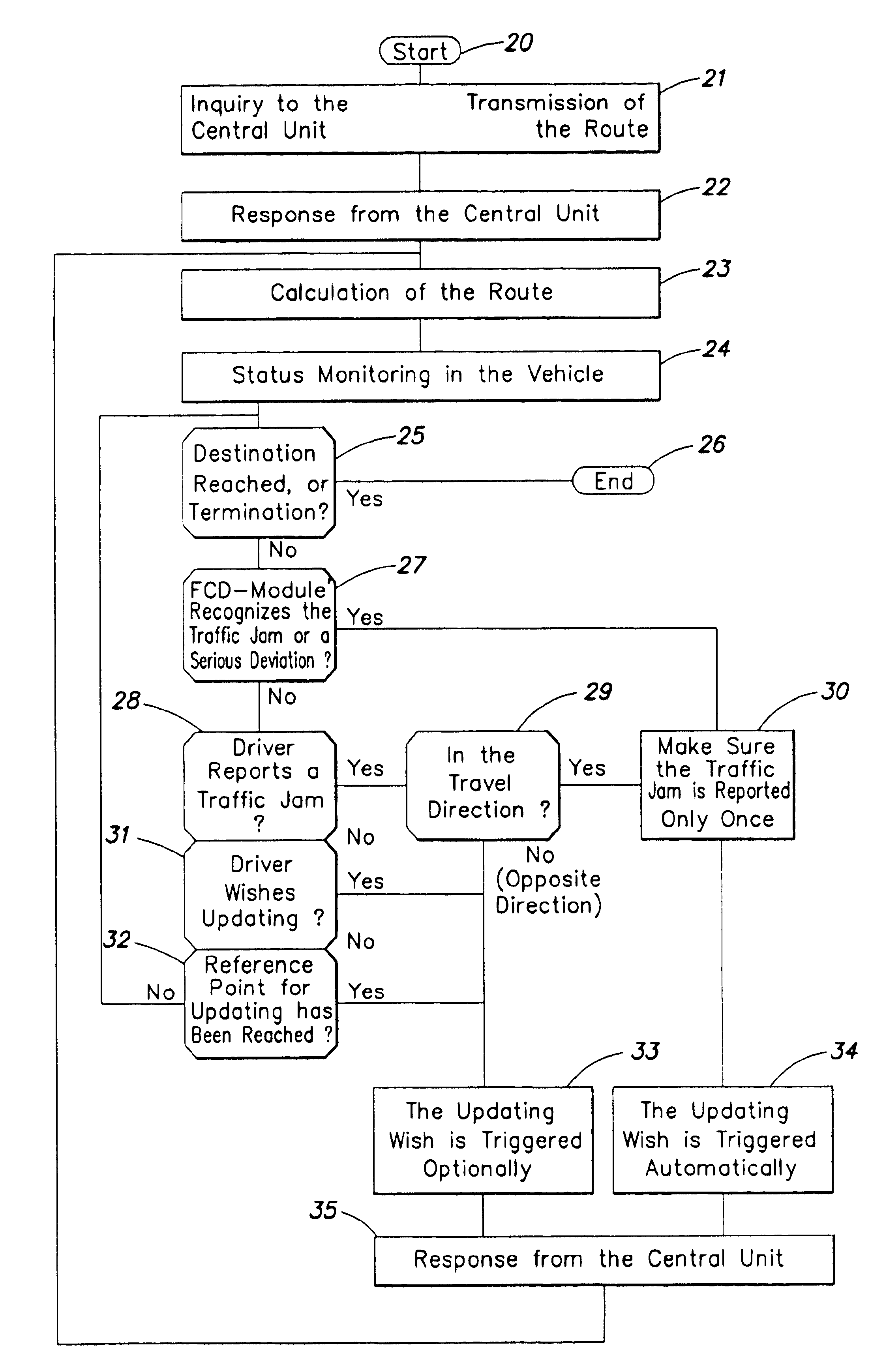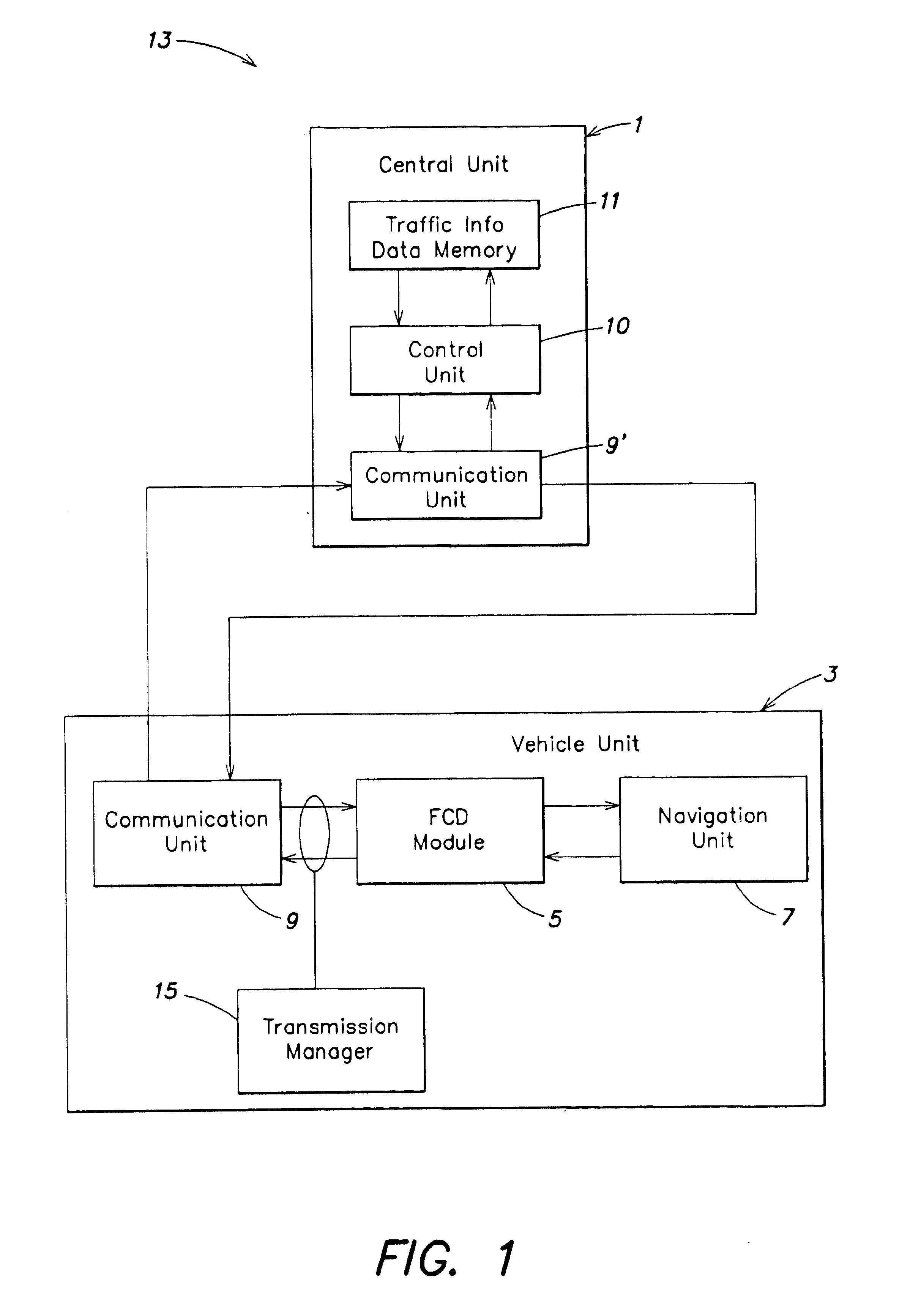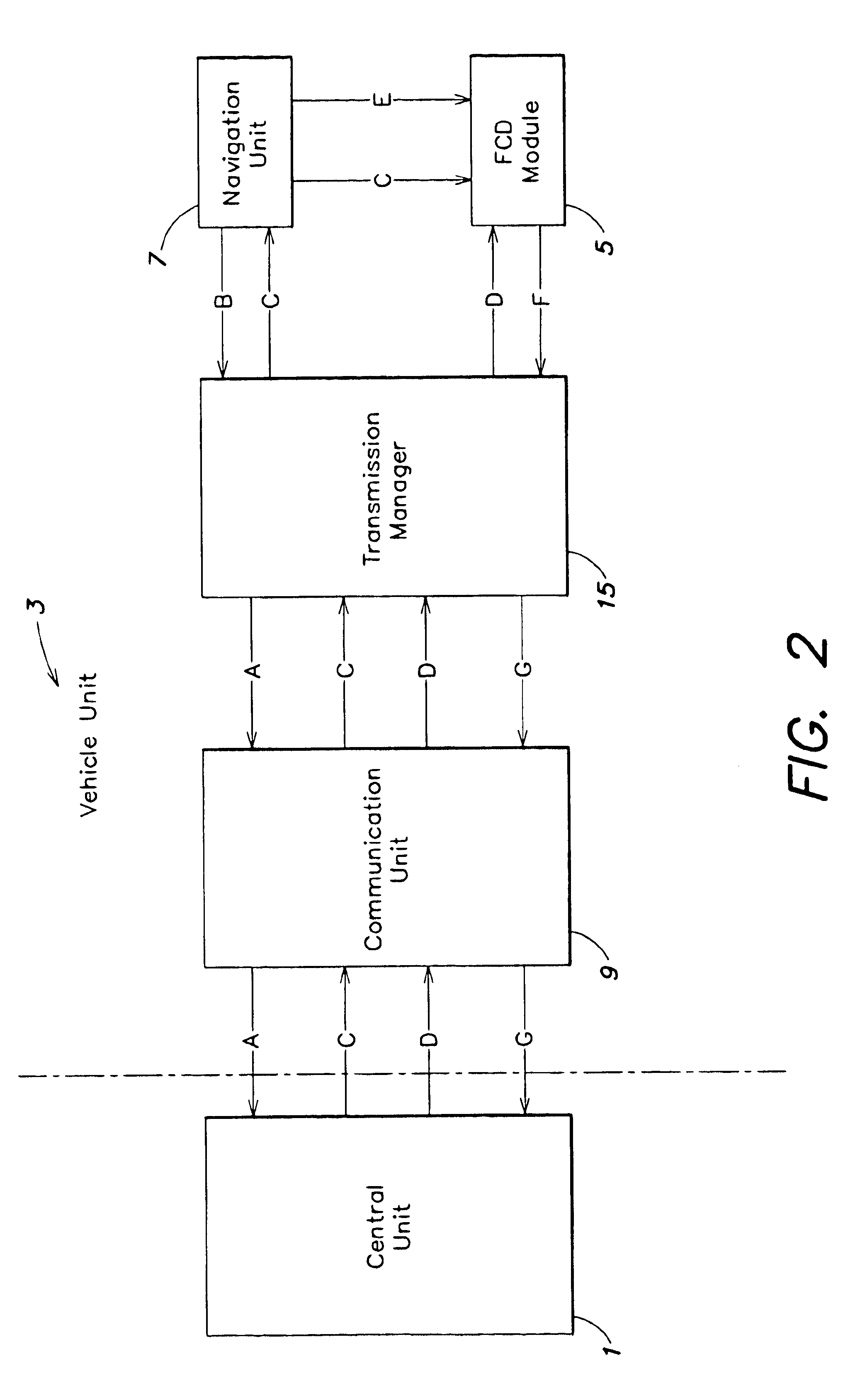Motor vehicle navigation system that receives route information from a central unit
a technology for motor vehicles and navigation systems, applied in beacon systems, traffic control systems, telephonic communication, etc., can solve the problems of insufficient quantity and quality of centrally stored traffic information, inability to achieve effective techniques, and inability to provide terminal devices with sufficient information, etc., to achieve the effect of accounting for communication and transaction costs
- Summary
- Abstract
- Description
- Claims
- Application Information
AI Technical Summary
Benefits of technology
Problems solved by technology
Method used
Image
Examples
Embodiment Construction
FIG. 1 illustrates a block diagram of an inventive route calculation system 13. The system includes a central unit 1, whose location preferably is fixed, and a vehicle unit 3 situated in a vehicle.
The central unit 1 includes a traffic information data memory 11, and a control unit 10 that is responsible for selecting the traffic information relevant to the requested routes, the choice of reference points for new automatic inquiries, and the interpretation and analysis of the received information. The central unit 1 also includes a communication unit 9′ to transmit and receive data. The traffic information data memory 11 is connected to the control unit 10 through a bidirectional connection, and the control unit 10 is also connected to the communication unit 9′ through a bidirectional connection.
A vehicle unit 3 includes a communication unit 9 to transmit and receive data, a floating car data (FCD) module 5, a navigation unit 7, and a transmission manager 15. In this example, the com...
PUM
 Login to View More
Login to View More Abstract
Description
Claims
Application Information
 Login to View More
Login to View More - R&D
- Intellectual Property
- Life Sciences
- Materials
- Tech Scout
- Unparalleled Data Quality
- Higher Quality Content
- 60% Fewer Hallucinations
Browse by: Latest US Patents, China's latest patents, Technical Efficacy Thesaurus, Application Domain, Technology Topic, Popular Technical Reports.
© 2025 PatSnap. All rights reserved.Legal|Privacy policy|Modern Slavery Act Transparency Statement|Sitemap|About US| Contact US: help@patsnap.com



